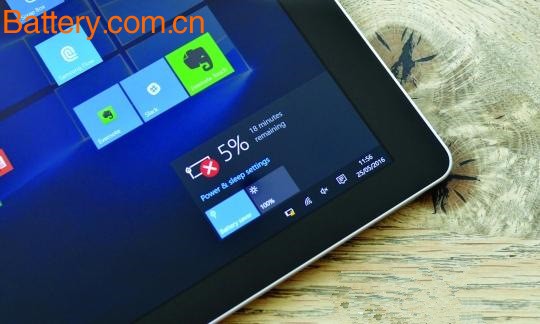The performance of the processor doubled every 18 months, but the battery capacity took almost 10 years to achieve the same progress. The battery of the 17-inch MacBookPro laptop exploded due to expansion. On October 6, tests conducted by the Applied Energy Center Battery Lab in Singapore showed that the Samsung Note7 phone exploded after putting pressure on the fully charged battery. There is a small box filled with chemicals under the plastic and metal casing ready to react to generate electricity. Keeping the lithium-ion battery 's power at 20%-80% helps reduce battery drain. Batteries are driving modern life. From smart phones to electric cars , many technology devices are inseparable from batteries. But how does the battery store power? Why are they not always used? After many Samsung cell phone battery explosions, people are facing a new problem: Why does the battery explode? How can we make the battery more durable? safer? It is no exaggeration to say that battery life is an "explosive" problem. Samsung has discovered this sad fact through painful lessons. Samsung's Galaxy Note7 mobile phone has been praised for its battery life as far as its competitors. Unfortunately, the good times are not long. The GalaxyNote7 battery explosion occurred in the world. Samsung was forced to recall the faulty model and launch a return plan, but the replacement of the new phone also began to explode, forcing Samsung to stop production. This incident is only the latest roadblock on the long road to improving the battery performance of electronic devices. The performance of the processor is rapidly increasing, doubling every 18 months, but the battery capacity has been nearly 10 years to achieve the same progress. This huge gap has begun to cause problems, and Samsung’s lesson once again shows that this is a difficult technical challenge. The battery of a smartphone is usually not enough to support a full day of use. The laptop can only be used for several hours. It is difficult to break the 350 miles (about 563 kilometers) after the electric car is fully charged. So why is battery capacity still a problem that is so difficult, when can we overcome it? Battery construction and principle A battery is like a small container filled with chemical energy. When the smartphone is plugged into a power source, the current initiates a chemical reaction within the battery that causes electrons to flow from the negative pole to the positive pole. After charging is complete, the battery pushes electrons through the loop (in this case, the smartphone) to the negative pole until all the electronics in the battery have returned to the negative pole, or until the internal switch is turned off. A typical battery typically contains a negative electrode, a positive electrode, and an electrolyte—the medium through which the positive ions circulate. Lithium-ion batteries used in most smartphones and electronic devices contain a metal oxide positive electrode made of a mixture of cobalt, nickel, manganese or iron, a porous graphite negative electrode containing lithium ions inside, and a lithium salt electrolyte. The positively charged lithium ions flow from the negative electrode through the electrolyte to the positive electrode, driving the electrons through the smartphone and back to the negative electrode. Why is the battery not durable? The principle of the battery may be simple, but the technology involved is complex. The biggest limitation of batteries is their energy density. The amount of electrical energy a battery can produce depends on how much energy is stored in its chemical components. The inactive materials in the battery constitute a burden, including the outer casing, the control chip, and the cable that outputs the current - they only add weight and do not increase energy. A typical smartphone lithium-ion battery has an energy density of about 150 watt-hours per kilogram (Wh/kg). Since the birth in 1990, the energy density of lithium-ion batteries has increased, but it is still limited by structural and chemical principles. Depending on the technology available, the only way to quickly increase the time spent on smart batteries is to increase the energy efficiency of smartphone electronics or to increase the size of the battery. However, increasingly slimmer smartphones require thinner batteries. During the life of a smartphone, battery life is not constant, and battery life becomes shorter and shorter as time passes and the battery is repeatedly charged and discharged. This is because the chemical reaction that generates current causes a thin layer of lithium to deposit on the electrode, resulting in a decrease in the amount of lithium ions available for generating current and an increase in internal resistance of the battery. The higher the resistance, the harder it is to maintain the effective voltage of the battery, so the power output after each charge is reduced. You may remember the relevant formulas learned in middle school: Voltage = current x resistance (V = IR) The cause of the battery explosion A battery with a much higher energy density than a lithium-ion battery already exists, but it is not safe enough to be suitable for portable devices. “The more energy you put into the box, the more dangerous it is,†says Billy Wu, a lecturer at Dyson College of Engineering, London Imperial College of Technology. “Safety is the key, temperature management is critical. If the battery When the temperature exceeds 800 degrees Celsius, it will cause 'thermal runaway' and the parts will begin to decompose, which will lead to an explosion." The specific reasons for the explosion of Samsung smartphones are still unknown, and the company only revealed that it was caused by 'battery problems'. The future of battery technology In the short term, advances in batteries will rely primarily on pushing lithium-ion technology to their theoretical limits to increase the energy density of batteries. Lithium-ion batteries that typically use lithium manganese oxide have an energy density of 280 watt-hours/kg, but the actual energy density of the final product is only 150 watt-hours/kg, so there is still much room for improvement. “The key is to optimize the internal structure of the battery,†says Billy Wu. “The inside of the battery is a porous structure filled with active materials.†"To achieve greater energy output, it is necessary to increase the pores of the structure, thereby increasing the surface area, allowing more lithium ions to pass each time, but conversely, if the voids increase, the amount of active material that can be accommodated is correspondingly reduced, resulting in a decrease in power. Many companies around the world are researching newer, more advanced battery chemistries, such as lithium-sulfur or lithium-silicon batteries. In the more distant future, solid-state batteries may become a reality. In such a battery, the liquid electrolyte is replaced by a solid substance. This will greatly improve the safety of the battery. Wu explained, "The main advantage of solid-state batteries is that they can continue to use lithium as a negative electrode material. Lithium has excellent energy density, but there is a safety hazard when used in combination with electrolyte." According to Wu, metal-air batteries using zinc, lithium or aluminum as the main materials are also expected, but it will take at least 20 years for such batteries to be put into commercial use. How to extend battery life Some simple methods can help extend battery life. Due to the chemical reaction characteristics in the battery, the battery is discharged when the remaining electric energy is less than 20% or when the capacity is more than 80%. Therefore, keeping the power of the lithium-ion battery at 20%-80% helps to reduce battery loss and maintain the high power capacity of the battery for a long time. The intelligent power management system under development is based on this principle. Never leave your phone in a state of long-term charging, especially for laptops. Regular charging and discharging will help the battery maintain a better working condition. It can effectively extend battery life by charging and discharging once a month.
7 ton Diesel Forklift is Shantui brand. The forklift
truck is of Japan quality but china price with 1 year warranty. Forklift export
will have free tool box. Spare parts all you need can be provided. The forklift
truck is Equipped with Chinese powerful and reliable engines (brand Chaochai)
with excellent environmental performance; Original imported Isuzu, Mitsubishi
engines are optional.
The advantages are as follows
1. Ergonomics adjustable seat: designed according to the
ergonomic principles, make the operation much comfortable and also relieves the
fatigue caused by long continuous operation.
2. New designed overhead guard protective the sudden
accidents.
3. Bigger and non-slip step make operating convenient and
safe.
4. The standard LED lamps and warning lights make it
safer, more energy efficient and create better working condition.
5. Lift trucks are designed for the operator to be more
productive and require less downtime for maintenance
Shantui products including diesel forklift, Electric Forklift, heavy duty
forklift, Gasoline Forklift, container forklift, Side Loader , Pallet Truck ,
Construction Machinery including shantui bulldozer, Wheel Loader , crawler
excavator, road roller, generator set, motor grader, truck crane, construction
machinery parts, Shantui Parts , Cummins engine parts, komatsu parts, and other
machinery parts.
7 Ton Diesel Forklift,7 Ton Forklift,7 Ton Forklift Trucks,Container Forklift Truck SHANDONG HE FORK TRUCK CO.,LTD. , https://www.shantuimachinery.com





